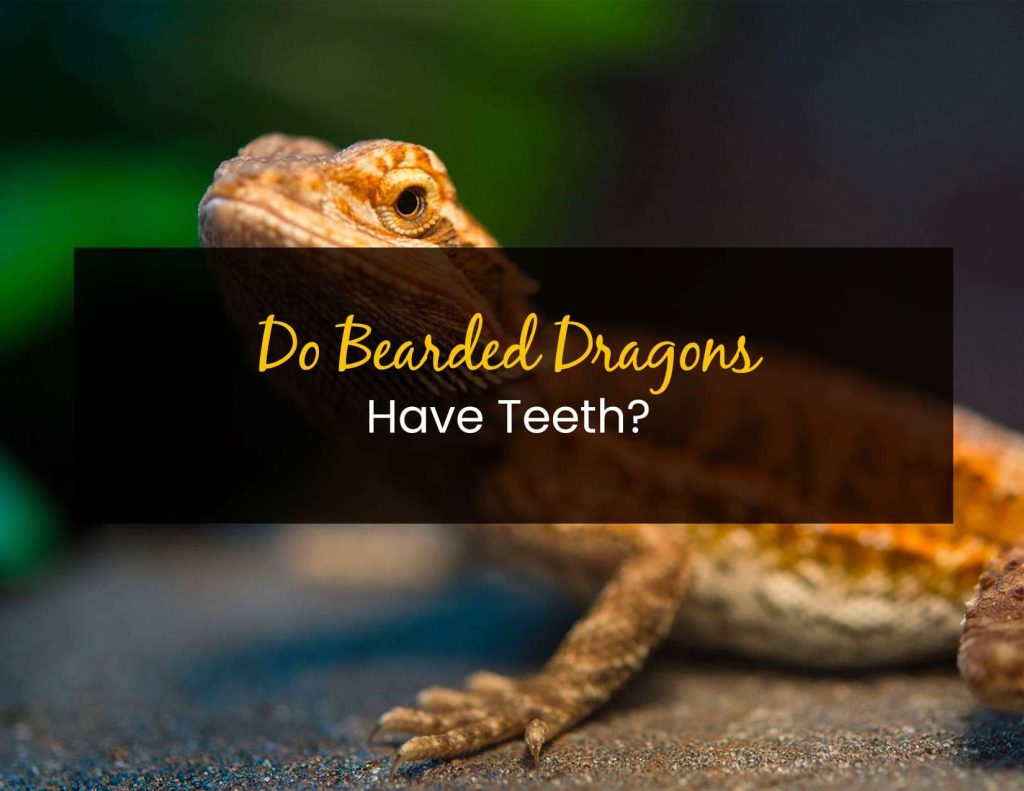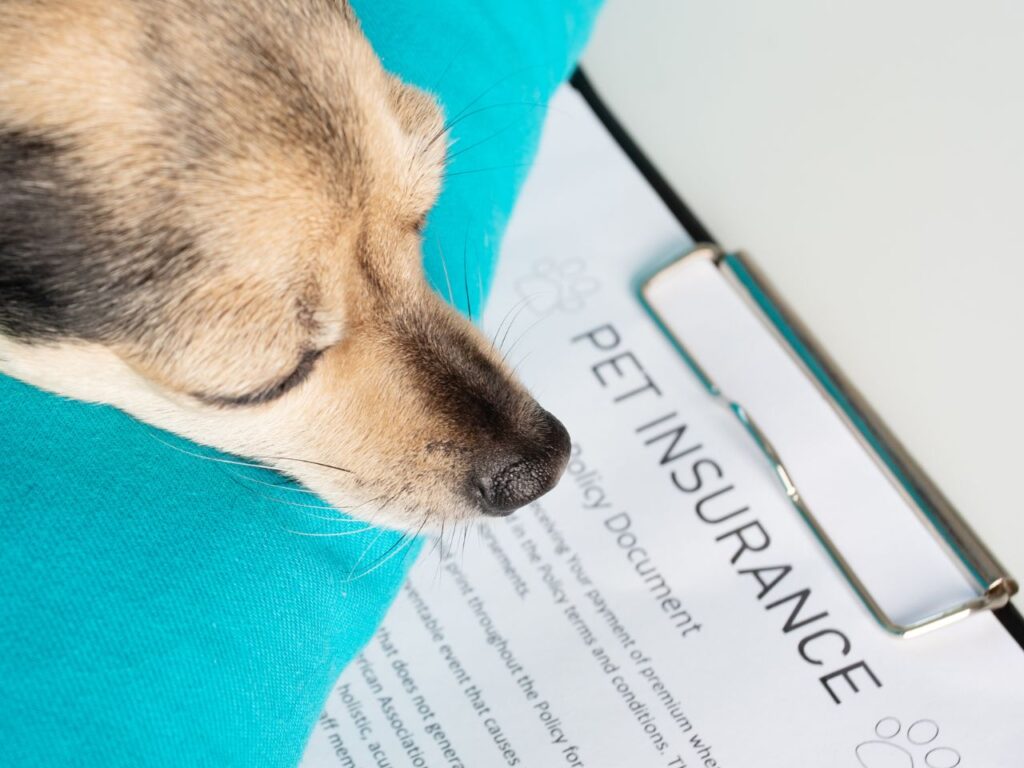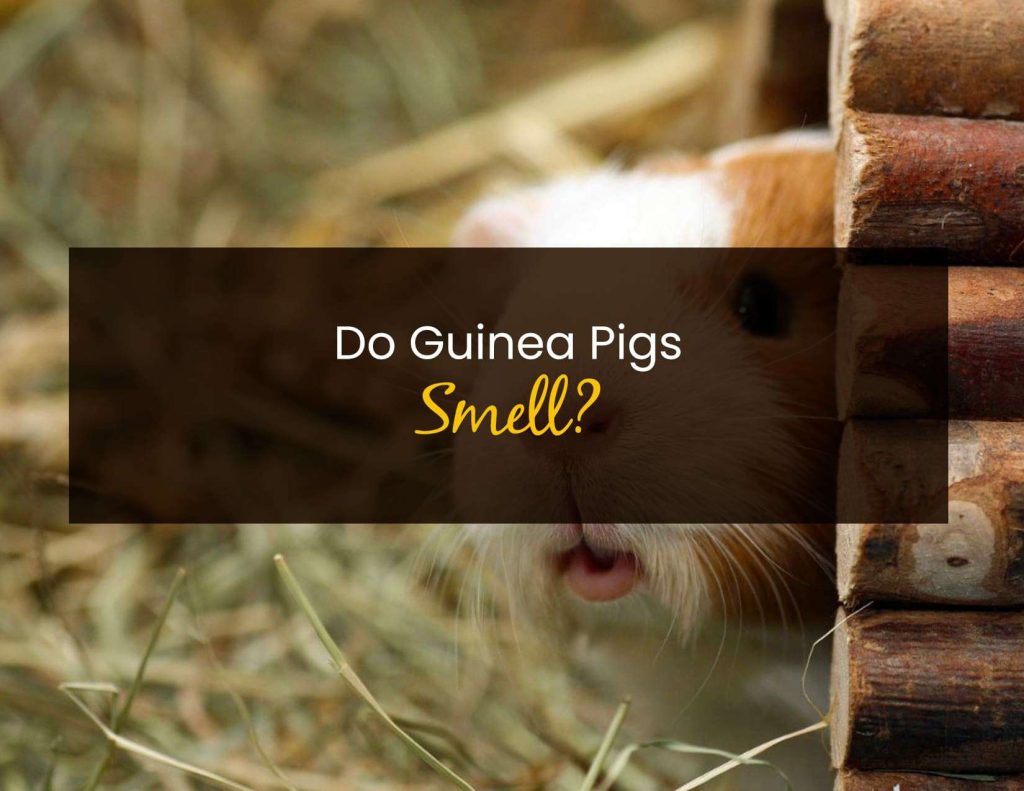Bearded dragons are possibly the most popular reptile pet in the world. These cute lizards have tons of personality and keep drawing the attention of potential new bearded dragon owners. However, one of the main questions we keep hearing is, “do bearded dragons have teeth?”

© Photo by Gaurav Joshi from Pexels
In short, yes, bearded dragons do have teeth. Bearded dragons are born with teeth and keep their teeth throughout their entire lives. Bearded dragons have two sets of teeth. The front teeth are sharper and help hold prey in their mouth and help tear away bite-sized chunks of vegetation. The back teeth are rounded and stronger. These teeth are used much like our molars. They help crush food into smaller and easily swallowable portions. In this article, we will be answering many of the questions you might have about bearded dragons. Furthermore, we will give you an in-depth explanation of bearded dragon teeth.
What Is A Bearded Dragon?
Bearded dragons are a species of lizard that is native to the desert regions of Australia. They fall into the Pogona genus, which has eight different species of bearded dragons. Each of these bearded dragons is given their name for their trademarked beard made of spines on their neck. The spiny or scaly beard on their neck is made of spikes that can be flared up when angry or threatened. The spikes on their chin help them look slightly bigger than they are, which can help out in a pinch by making them seem a lot harder to eat. Furthermore, bearded dragons will let out a loud hiss, which is usually paired with their beard flair. Bearded dragons can live up to 10 years, grow as large as 24 inches long, and weigh up to 18 ounces when fully grown. Bearded dragons can also come in a vast amount of colors and patterns. Here is a shortlist of bearded dragon colors:
- Red: Red bearded dragons have three primary hues; red, blood-red; and ruby red
- Yellow: There are five distinct types of yellow bearded dragons, including yellow, gold, lemon, citrus, and sand fire gold
- White: There are five different types of white-bearded dragons, Snow, Albino, zero, and wero
- Blue: Blue bearded dragons consist of two main colors, which are blue and purple
- Mixed Colors: Through breeding in captivity, breeders have produced a few more colors and patterns, including sand fire red, sunburst, tangerine, orange, and citrus tiger
There are bearded dragons that are bred to have no color or pattern like the Sero bearded dragons. Then you have witblits, bearded dragons with no patterns while also having pale but solid coloring. Finally, hypomelanistic bearded dragons, or hypos, have less pigmentation in their skin and tend to be lighter colors and patterns. Breeding zeros with either a hypo or a witblit can result in paradox bearded dragons. Paradox bearded dragons are a solid color with irregular spots or splats of strange or unexpected colors. Furthermore, breeding zeros with witblits can result in wero bearded dragons, which are one solid color across their entire body. The color and pattern variations in bearded dragons have different prices, with the rarer variations being the most expensive. Paradox or wero bearded dragons are the most expensive and have price ranges that can drastically differ depending on color and patterns.
Do Bearded Dragons Have Teeth?
Bearded dragons do have teeth. While they are small and hard to notice, they are still there and get the job done. Bearded dragons hatch from their eggs with all of their teeth, and these teeth remain throughout their entire lives. Bearded dragons have two sets of teeth in their mouth separated into two sections, front and back. A bearded dragon’s front teeth are sharp and are primarily used to grip onto prey and help tear chunks of food into bite-sized chunks. In comparison, a bearded dragon’s back teeth are more round and act almost like molars. The bearded dragon’s back teeth are used for crushing food, making it easier for them to swallow it. Like all animals and humans, a bearded dragon’s teeth can fall out. The front teeth can regrow; however, the back teeth can not. While the back teeth can not grow back, they are much stronger than the front teeth and are fused into the jaw. However, it is more common for the back teeth to wear down over time rather than fall out or come loose.
Can You Brush A Bearded Dragon’s Teeth?

© Photo by Miriam Fischer from Pexels
Yes, you can brush your bearded dragon’s teeth! However, it can be a difficult process, and your bearded dragon will most likely not like its teeth being brushed. With that said, you should consult your veterinarian and have them show you what you will need and the proper way to brush your bearded dragon’s teeth. Furthermore, you should brush your bearded dragon’s teeth once every one to two weeks to ensure tooth and gum health. You can also help protect your bearded dragon’s teeth by feeding them a proper diet. Bearded dragon teeth are much like human teeth because they are affected by plaque and plaque build-up. You can prevent this by feeding them crunchy bugs and veggies. At the same time, you do not have to feed them crunchy foods exclusively. Adding a crunchy meal every now and then will help with tooth and gum health.Having the correct lighting set up can also help prevent tooth decay for your bearded dragon. UVB lighting is highly recommended for nearly all reptile species. UVB lights will help your bearded dragon synthesize Vitamin D3, allowing your bearded dragon to metabolize calcium properly. This is vital for bearded dragons because calcium is the most important nutrient for the bearded dragon diet.
What Do Bearded Dragons Eat?
Bearded dragons are considered to be omnivores, which means they eat both plants and meat. Bearded dragons in the wild will eat anything they can get their teeth on, including most bugs and vegetation. However, bearded dragons that are being kept as pets will have a much wider range of available food. Bearded dragons are not picky eaters and will eat almost anything that you place in their cage that looks remotely appetizing. With that said, we have gathered a list of healthy foods that you can feed your bearded dragon.First, we are going to start off with vegetables. Veggies should make up for 75 to 80% of your bearded dragon’s daily diet. All vegetables should be served raw and be cut into bite-sized pieces for your bearded dragon.
- Bell Peppers
- Carrots
- Collard Greens
- Kale
- Spaghetti Squash
- Yellow squash
- Pumpkin
- Zucchini
- Peeled Cucumbers
- Cabbage
- Sweet Potato
- Tomato
- Broccoli
- Asparagus
Next, we will go over the list of insects you should feed your bearded dragon. Insects are filled with calcium and protein that is essential for your bearded dragon’s daily health. So, while 75% to 80% of your bearded dragon’s daily diet should consist of veggies, insects will make up for the other 25% to 20%.
- Butter Worms
- Earthworms
- Mealworms
- Superworms
- Waxworms
- Silkworms
- Dubai Roaches
- Cockroaches
- Crickets
Some of the insects we listed above are considered superfoods for most reptiles. Dubai roaches and super worms fall under this category and are packed with tons of nutrients. However, some insects like crickets can be lacking in some vital nutrients for your bearded dragons. If you plan on feeding your bearded dragon some crickets, you should coat them in calcium or vitamin supplement powder first.Furthermore, when feeding your bearded dragon, avoid feeding them the same insect more than twice in a row. Bearded dragons will need a wide range of insects to feed on to get the different nutrients and vitamins they need from them. If you feed your bearded dragon the same insects repeatedly, it can lead to some health issues. Here is a list of some of the health issues your bearded dragon can have from eating only one type of insect.
- Obesity
- Vitamin Toxicity
- Vitamin Deficiency
- Loss of Appetite
- Organ Diseases
- Metabolic bone disease
Can I Feed My Bearded Dragon Fruits?

© The News PressBearded dragons are fond of eating fruits. In fact, most fruits can be healthy for your bearded dragon as they are packed with vitamins and nutrients that your bearded dragon needs.However, with these essential vitamins and nutrients come tons of natural sugars and water content. Too much sugar in your bearded dragon diet can cause your bearded dragon to develop diabetes. Furthermore, too much water in your bearded dragon’s system can lead to some dangerous health issues as well. Bearded dragons are from the Australian desert in the wild and thus are used to surviving on small amounts of water. However, if a bearded dragon ingests too much water, it can become overhydrated. When a bearded dragon is overhydrated, its body will get rid of this extra water through diarrhea. However, diarrhea is dangerous for bearded dragons as it can cause them to be dehydrated, which can be deadly.With that said, if you plan on feeding your bearded dragon fruits, only do so as treats and do not feed them fruits as part of their daily diet. Always research feeding your bearded dragon any fruits, and stay away from all citrus fruits completely. Furthermore, only feed your bearded dragon fruits if they are healthy, as feeding them fruits when they are sick can cause them to have additional problems. Always do your research before feeding your bearded dragon any fruits or berries as treats.
Final Thoughts
Bearded dragons hatch out of their eggs with a head full of sharp teeth. These teeth gradually dull with age but retain their usefulness throughout a bearded dragon’s life. With that said, bearded dragon tooth health is important, and you should take the necessary steps to provide good tooth health for your bearded dragon. To do this, provide your bearded dragon with proper UVB lighting, feed them crunchy insects and veggies now and then, and learn how to brush your bearded dragon’s teeth.










